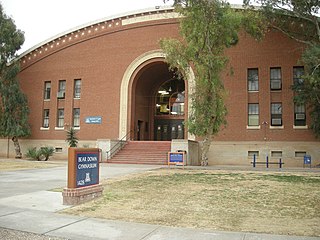 W
W"Bear Down" is the official motto of the University of Arizona, located in Tucson, Arizona. It is the inspiration for "Bear Down, Arizona!," the unofficial fight song of the school's Arizona Wildcats. The official fight song is "Fight! Wildcats! Fight!" written by Douglas Holsclaw.
 W
W"Cheer for the Blue and White" is a fight song of Indiana State University. The words and music were written by Malcolm Scott, who also arranged "Dear Old Rose," the school song for Rose Poly. Scott was a graduate of Indiana State Teachers College earning a degree in music.
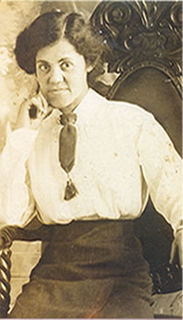 W
W"Dear A&T" is the school song of North Carolina Agricultural and Technical State University. The words were written by Susan B. Dudley, wife of the second president, James Benson Dudley. Music for the poem was composed by Charles E. Stewart, director of instrumental and vocal music at the university from 1909 to 1917.
 W
W"Dynamite" is the official fight song of Vanderbilt University, written by Vanderbilt alumni Francis Craig in 1938 a week prior to a football game between the college and the University of Tennessee. It is played at football games, basketball games, and at other Commodore sports events.
 W
W"The Eyes of Texas" is the school spirit song of the University of Texas at Austin. It is set to the tune of "I've Been Working on the Railroad". Students, faculty, staff, and alumni of the University sing the song at Texas Longhorns sports games, before the fireworks and other events.
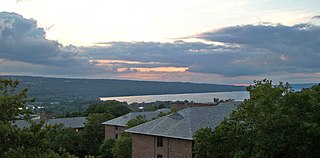 W
W"Far Above Cayuga's Waters" is Cornell University's alma mater. The lyrics were written circa 1870 by roommates Archibald Croswell Weeks, and Wilmot Moses Smith, and set to the tune of "Annie Lisle", a popular 1857 ballad by H. S. Thompson about a heroine dying of tuberculosis.
 W
W"Fight Fiercely, Harvard" is a satirical college fight song written and originally performed by Tom Lehrer and dedicated to his alma mater, Harvard University. The song was written in 1945 while Lehrer was in his second year of study at Harvard College.
 W
WThe Georgetown University Alma Mater is one of the traditional songs of Georgetown University, and the university's official and undisputed alma mater. It was written to the tune of the Welsh battle song Men of Harlech in 1894 by Robert J. Collier, a Georgetown student. The song is performed by the university orchestra and occasionally other groups at various school events, including commencements and athletic games.
 W
W"Give My Regards to Davy" is Cornell University's primary fight song. The song's lyrics were written in 1905 by Charles E. Tourison 1905, W. L. Umstad 1906, and Bill Forbes 1906, a trio of roommates at Beta Theta Pi, and set to the tune of George M. Cohan's "Give My Regards to Broadway". The song refers to a fictional encounter between an anonymous student and David Fletcher "Davy" Hoy, the registrar and secretary for the committee on student conduct, and Thomas Frederick "Tee Fee" Crane, the Professor of Languages and the first Dean of the College of Arts and Sciences revolving around the student's expulsion on account of binge drinking. David Hoy was known for his ferocity as a strict disciplinarian. Professor Crane, on the other hand, was generally well liked among students. "Piker" is said to be a historical slang term for a freshman, but it actually means a poor student or slacker. Theodore Zinck's was a bar in downtown Ithaca that has since closed. Its legend still lives on in the weekly event for seniors "Zinck's Night", which is celebrated worldwide in October by Cornellians.
 W
W"Hail Purdue!" is the official fight song of Purdue University. The lyrics were written in about 1912 by James R. Morrison, and set to music by Edward S. Wotawa. The completed song was published in 1913, initially titled "Purdue War Song", and was dedicated to the Purdue Varsity Glee Club, of which Wotawa was a student member and director. Until the adoption of the Purdue Hymn as university anthem in 1993, it frequently served as both fight song and alma mater, being played on ceremonial occasions such as commencements.
 W
W"Hail to Pitt" is the most traditional fight song of the University of Pittsburgh, which is commonly referred to as Pitt. The saying "Hail to Pitt!" is also the most traditional and commonly used slogan of the University of Pittsburgh and its athletics teams. The slogan is frequently used in promotional material, printed on merchandise and souvenirs. It was also the title of a 1982 history of Pitt athletics by author Jim O'Brien. The slogan is often used among alumni as a statement of affiliation, including as a closing signature in conversation or correspondence between alumni, and is sometime abbreviated as "HTP" or "H2P", the latter of which is a registered trademark of the university and is frequently used on official university signage and merchandise.
 W
W"Hail to the Orange" is the alma mater of the University of Illinois at Urbana–Champaign. Its alternate version, "Hail to the Purple," is an official song of the fraternity Sigma Alpha Epsilon. The song was written in 1910 by two students: Harold Vater Hill, credited with the music, and Howard Ruggles Green, credited with the lyrics.
 W
W"Hail! Minnesota" is the regional anthem of the U.S. state of Minnesota. A variation is used as a school song of the University of Minnesota. It originated at the university in the early 20th century when some students decided to honor their graduating class with a new song. In 1945, the Minnesota State Legislature approved the tune as the state song.
 W
WI'm a Jayhawk is the fight song of the University of Kansas.
 W
W"Illinois Loyalty", also known as "We're Loyal to You, Illinois" or just "Loyalty," is a song associated with the University of Illinois at Urbana–Champaign. It is the school's alma mater. It is also used as the school's fight song.
 W
W"Mighty Bruins" is a fight song of University of California, Los Angeles sports teams. Composed by Academy Award-winning composer Bill Conti, the song was commissioned by the UCLA Alumni Association on its fiftieth anniversary. It debuted in 1984 at the football game against Stanford University, with the school marching band conducted by Conti himself.
 W
W"On the Banks of the Old Raritan" is a song, or alma mater, associated with Rutgers, The State University of New Jersey, in the United States. The original lyrics were written in 1873 by Howard Newton Fuller, an 1874 graduate of Rutgers College. Fuller quickly prepared the song as a school hymn for the college's Glee Club, an all-male choral ensemble, before a performance in Metuchen, New Jersey. Fuller chose to set the lyrics to the tune of melody, "On the Banks of the Old Dundee", a popular Scottish melody regarded as a drinking song, and titled the song for the Raritan River.
 W
W"The Orange and Blue" is the traditional fight song of the Florida Gators intercollegiate sports teams of the University of Florida in Gainesville, Florida.
 W
WThe "Pitt Victory Song", one of the most popular and widely used fight songs of the University of Pittsburgh, is often played in conjunction with "Hail to Pitt" and the "Panther Song". It was originally written by former to students of the university in order to solve the issue of the university not owning the copyright to "Hail to Pitt" which prevented the school from granting permission for its use during football radio broadcasts. Lyrics were written by G. Norman Reis and Louis M. Fushan. Music was written by Benjamin Levant. The song debuted in the Cap and Gown Club's 1938 musical production entitled Pickets, Please! Although commonly performed at university events, few people today know the rarely heard first portion of the song that occurs before the chorus. However, the most common cheer that is used during Pitt-related events and athletic contests is "Let's go Pitt!", which while perhaps derived from the song's lyrics, is often cheered even in absence of the song or music.
 W
WRagtime Cowboy Joe is a popular western swing song. The lyrics were written by Grant Clarke and the music was composed by Lewis F. Muir and Maurice Abrahams. It was copyrighted and published in 1912 by F.A. Mills.
 W
W"(I'm a) Ramblin' Wreck from Georgia Tech" is the fight song of the Georgia Institute of Technology, better known as Georgia Tech. The composition is based on "Son of a Gambolier", composed by Charles Ives in 1895, the lyrics of which are based on an old English and Scottish drinking song of the same name. It first appeared in print in the 1908 Blueprint, Georgia Tech's yearbook. The song was later sung by the Georgia Tech Glee Club on The Ed Sullivan Show in 1953, and by Richard Nixon and Nikita Khrushchev during the 1959 Kitchen Debate.
 W
WOften called the most beloved and popular of college fraternity songs, "The Sweetheart of Sigma Chi" was written in 1911 by Byron D. Stokes and F. Dudleigh Vernor. Stokes had written the words while in class one June day that year, and presented them that afternoon to Vernor, who was practicing the piano in a local house, and composed the music at that time. The song has since become a favorite among ballroom orchestras and was used in two movie musicals of the same name, in 1933 and 1946. When asked about the song's inspiration, Stokes replied, "The 'Sweetheart' is the symbol for the spiritual ingredient in brotherhood. It was the Sigma Chi fraternity itself that inspired the song. I wrote the words not long after my initiation, and the magic of our Ritual with its poetic overtones and undertones was, I suppose, the source of my inspiration". The original musical composition remained on campus until 2007 when it was lost and not recovered.
 W
W"There Goes Old Georgetown" is the unofficial name of the Georgetown University sports teams' fight song. It is also known as simply "Georgetown Fight Song". It is actually an amalgamation of three songs, only the oldest of which, 1913's "The Touchdown Song", contains the lyric "here goes old Georgetown". Onto a version of this was added "Cheer for Victory", written in 1915, and "The Hoya Song", written in 1930, both of which are included in their entirety. The authors of these songs, and of the combined version, are unknown. Although some effort has been taken to change the song, no serious proposal has come forth.
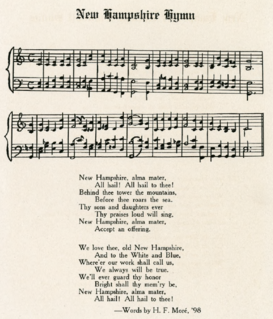 W
WThe "UNH Alma Mater" is the official alma mater of the University of New Hampshire in Durham, New Hampshire. The lyrics to the song were written by Herbert Fisher Moore, an 1898 graduate of the school, and are sung to the tune "Lancashire" by Henry Smart.
 W
WThe alma mater of the University of Pittsburgh was adopted soon after the University changed its name in 1908 from the Western University of Pennsylvania to its current moniker. Lyrics were written by George M. P. Baird, class of 1909 and were set to the tune of what was then the Austrian National Anthem. A new tune for the "Alma Mater" hymn was composed by Charles W. Scovel, class of 1883, but it was not widely adopted and was either lost or became obscure.
 W
W"The Victors" is the fight song of the University of Michigan (UM) written and composed by UM student Louis Elbel in 1898. The song was first played publicly by John Philip Sousa and his band.
 W
WWar Eagle is a battle cry, yell, or motto of Auburn University and supporters of Auburn University sports teams, especially the Auburn Tigers football team. War Eagle is a greeting or salutation among the Auburn Family. It is also the title of the university's fight song and the name of the university's golden eagle.
 W
W"We Are the Boys from Old Florida" is a song commonly played and sung during University of Florida (UF) sporting events, most notably at the end of the third quarter at football games by The Pride of the Sunshine, the school's marching band. It is very similar to other school songs sung by several other colleges and schools around the United States, and its origin and original composer is unknown. At Florida, it has been popular since the 1920s.
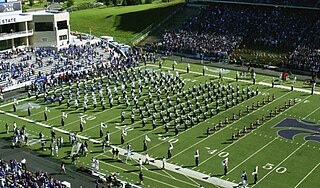 W
W"Wildcat Victory" is Kansas State University's official fight song. It was written in 1927 by Harry E. Erickson, when the school was still known as Kansas State Agricultural College. In addition to this song, the Kansas State University Marching Band also commonly plays "Wabash Cannonball" as an alternate fight song. John Philip Sousa's "Kansas Wildcats March," written for the school, is Kansas State's official march.
 W
WThe Yellow and Blue is the alma mater of the University of Michigan, written by Charles M. Gayley. Gayley composed the lyrics in 1886 while he was a professor of English and Latin at UM. He was motivated to write the song in hopes of winning a $20 prize from the student editors of the yearbook. As he wrote the lyrics, Gayley was thinking of the school colors, "azure blue and maize." Ultimately the song became a paean to the color and light of late summer in Michigan: the yellow grain in the fields, the yellow harvest moon, the varying blues of the sky at morning and sunset. These "ribbons that nature has spun" reminded him, too, of "the maid of the golden hair, and eyes that are brimming with blue."